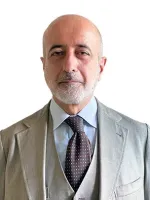| Go-To Guide |
|
The European Commission’s draft EU Space Act (draft Act or Act), is a proposal for supranational regulation released in June 2025. Across 118 articles and 10 annexes, the draft Act addresses authorization and registration for space activities, governance by Member States, technical rules, and more. As explored below, the scope of the draft Act is less than certain. However, the generally proposed process for authorization of space operators may be identified.
This GT Alert addresses the authorization procedures for Union space operators. See a previous GT Alert on the EU Space Act here.
Scope of the EU Space Act
Determining the exact scope of the draft Act may be challenging due to the imprecise construction of its definitions. Several definitions, including those of key terms, are largely circular. For example, a “collision avoidance space services provider” is defined as “a provider of collision avoidance services…”1; an “international organization” is “an international organization…”2; and a “space services provider” means “a provider of space services.…”.3 Because these terms are unclear, it may be difficult to ascertain what the Act regulates or what its scope is without further clarification.4
In addition to circular definitions, the Act also includes contradictory definitions. For instance, the Act defines “environmental sustainability” as the ability to preserve and protect the natural Earth environment over time,5 but later states that “environmental sustainability” covers sustainability in space and sustainability on Earth.6 Additionally, the Act states that a communications service provider should qualify as a “space operator” if it operates or controls a satellite,7 but the definition of “space operator” requires at least operation, control, and return of a space object.8 The scope of the Act may expand or narrow depending on how terms with currently conflicting definitions are ultimately defined.
The Act’s approach to definitions is further complicated by its use of undefined terms. For example, the Act contemplates a space operator needing authorization from the Member State in which it “intends to operate.”9 However, the Act does not clarify what qualifies as a state of “operation,” which might refer to different states, such as the state where the mission control center is located, or a state where the ground infrastructure is located (e.g., where commanding occurs). While “control” is defined in reference to “control” by a natural or legal person,10 what qualifies as “operation and control” of a space object is not defined. This lack of clarity makes it difficult to determine which state’s authorization is required.
Authorization for Space Activities
Setting aside the definitional issues, the general process for obtaining authorization under the Act may be outlined as follows:
| Question | Answer |
| Who is authorized? | Space operators. |
| What is authorized? | Carrying out space activities. |
| Why is an authorization needed? | To provide space services in the Union. |
| When is an authorization needed? | Prior to providing space services in the Union. |
| Where is an authorization obtained? | For Union space operators – from the Member State(s). For third country space operators – from the European Commission. |
| How is an authorization obtained? | The process varies for Union space operators versus third-country space operators. |
A “space operator” is defined as an entity that operates the space infrastructure by carrying out at least one of the following space services:
- operation, control, and return of a space object (spacecraft operator);
- operation, control, and monitoring of the launch process of a space object (launch operator);
- operation, control, and maintenance of facilities at the ground segment of space infrastructure used for the launch process (launch site operator); and
- operation and control of a space object for the purposes of providing in-space operation and service, including to other space objects (ISOS provider).11
Space Operator Authorization: Union Space Operators
Note: The following information lays out the application and authorization process as currently contemplated in the draft Act. This process, and the exact requirements, are subject to change as the draft Act proceeds through the reconciliation process towards potential adoption.
For a Union space operator,12 the first step in obtaining an authorization for space activities is identifying to whom an application must be submitted. An operator may need authorization from one to three separate Member States to carry out space activities,13 including the (1) state of establishment; (2) state where an applicant intends to operate; and (3) state where the applicant intends to launch.14 The authorization(s) must be obtained from a “competent authority” of a Member State(s) and prior to providing space services.15
Preparing an Application
To prepare an application, a Union space operator (applicant) begins collecting the documentation and evidence needed to demonstrate compliance with applicable provisions of the Act.16 This includes, for
|
EU Procedure Note – Commission Adoption of Implementing Acts The draft Act does not specify how an environmental footprint calculation is performed. Instead, the Act delegates to the Commission the power to adopt implementing acts under Article 5 of Regulation (EU) No 182/2011. Regulation (EU) No 182/2011 creates a “comitology system,” where the Commission must consult committees composed of Member States’ representatives to adopt implementing acts. Procedurally, Article 5 requires the Commission to provide draft implementing acts to a competent committee for examination. The committee then delivers a position. If the committee delivers a:
|
example, preparing an orbital debris plan and access management protocols. A qualified technical body would assess the collected information for compliance.17
Application preparation also requires that an operator calculate the environmental footprint (EF) of their proposed space activities.18 This study must be transmitted to a qualified technical body to obtain a certificate attesting the EF has been properly calculated.19 (The Act does not specify how the EF examination, calculation, and verification would be performed.)20
Next, an applicant must prepare an Environmental Footprint Declaration (EFD) and accompanying documents.21 The EFD includes administrative information, space activities and materials information, and proof of EF calculation, verification, and class.22 The EFD must additionally be accompanied by: (1) the EF certificate, (2) the study and data underlying the EF calculation, and (3) proof data was sent to the Commission.23
If the applicant intends to use space services provided by a third country space operator or an international organization, the applicant should also collect proof of registration in the Union Register of Space Objects (URSO) of the foreign service provider.24
Ultimately, the applicant would prepare a technical file compiling the above documentation (including evidence of compliance with technical rules, EFD and accompanying documentation, and proof of URSO registration for foreign space service providers) for submission to the appropriate competent authority.25 In the transmitted application package, the applicant should also indicate which qualified technical bodies are intended to conduct the required technical assessments.26
Application Processing
A competent authority has 12 months from the date of receipt of an application for carrying out space activities to issue an authorization or rejection of the hopeful Union space operator.27
Within this 12-month timeframe (and potentially shortly after reception of the application), the technical file is sent to qualified technical bodies for assessment.28 This assessment must take place within six months and culminates in the technical body returning an opinion on the compliance of the proposed activities with applicable technical rules.29 The competent authority takes this opinion into account when acting on the application.30
Notably, the component authority may request an applicant provide further information during the application’s processing. In this case, the 12-month “shot clock” would be suspended until an applicant provides “complete information,” as requested.31
Authorization and Registration with the URSO
If a Union space operator is authorized to carry out space activities, the authorizing competent authority must transmit this information to the European Union Agency for the Space Programme (Agency) to enable registration in the Union Register of Space Objects (URSO).32 (Contrary to what the name implies, the URSO is a register of authorised space operators).33
Once registration in the URSO is complete, an “e-certicitate” is issued identifying the space mission and space object, and atttesting to the conformiting of space objects with applicable rules.34 This e-certificate must accompany contracts for the provision of space-based data and space services in the Union.35
Similar to defining the scope of the draft Act, discerning the e-certification requirement and process is challenging. The URSO is only for space operator registration, and yet the Act contemplates URSO registration and e-certification of space service providers.36 The draft Act does not specify a process for space service providers who are not space operators to receive an e-certificiate.37
Changes & Costs
The draft Act does not specify a process for Union space operators to amend an application or request modification of authority to carry out space activities.38 This may be addressed at the Member State level. Following issuance of an authorization, a Member State’s competent authority is additionally empowered to suspend or withdraw an authorization for space activities.39
The Act contemplates a fee for space operator authorization under the draft Act, thought the amount of the fee and how it would be calculated is undefined.40 Finally, operators’ costs may also include enforcement penalties for infringement of the Act, and penalties are intended to be “effective, proportionate and dissuasive.”41
Conclusion
Overall, the draft EU Space Act aims to establish a regulatory framework for space activities within the Union, but its effectiveness may be hampered by ambiguities and procedural uncertainties. Until the Act’s definitions, authorization procedures, and compliance requirements are clarified, stakeholders may face challenges in understanding and fulfilling their obligations. Clearer guidance and more precise legislative language will be essential to help ensure the Act achieves its intended goals without imposing undue burdens on the space sector.






 />i
/>i
